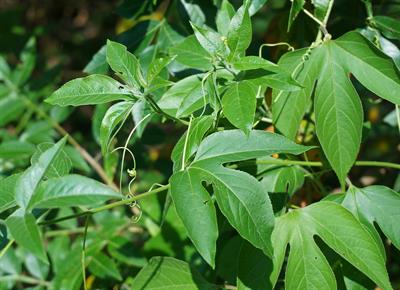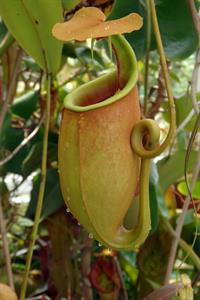PDF chapter test TRY NOW
Leaves of some plants get modified to do different functions to overcome environmental constraints or for some special purpose.
There is a variety of such modifications such as:
- Spines
- Tendrils
- Phyllode
- Traps
Spines are reduced form of leaves to overcome the impact of excessive heat. For example, in opuntia leaves are modified into spines.
Tendrils: In some plants especially in climbers the leaf gets modified to become tendrils, which are tender soft elongated thread-like structures.
For example, in Gloriosa superba the tip of the leaf is modified as tendrils, but in the case of Pisum sativum (pea) the terminal leaflets are modified into tendrils.

Phyllode is observed in Acacia auriculiformis.
The petioles are the stalk-like structures that connect the leaf to the stem, perform the function of photosynthesis rather than the leaf. Such leaf modifications are known as phyllode.
Traps: In plants like Nepenthes, to overcome nitrogen deficiency, the plant develop a flask-like leaf modification which traps the insects and absorb the nitrogen by digesting the insects by secreting digestive juices.

Reference:
Image credit:
Nepenthes: Free Image by Siegfried R. H. Hartmeyer from Pixabay; https://pixabay.com/photos/pitcher-plant-nepenthes-bicalcarata-3362417/
Tendrils: Free Image by Jan Haerer from Pixabay ; https://pixabay.com/photos/passion-flower-vine-vine-climber-1668061/
